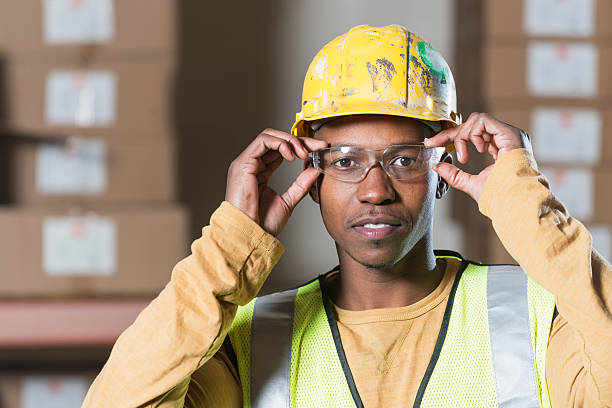When it comes to safeguarding your vision, nothing beats the importance of choosing the best safety glasses, particularly if you require progressive lenses. Whether you’re working in a hazardous environment or just want to protect your eyes during everyday activities, selecting the right pair of safety glasses is crucial. This comprehensive guide will delve into the best safety glasses and progressive safety glasses, helping you make an informed decision that combines safety, style, and comfort.
What Are Safety Glasses?
Definition and Importance
Safety glasses are specialized eyewear designed to protect the eyes from potential hazards such as flying debris, chemical splashes, and harmful radiation. Unlike regular glasses, safety glasses are constructed with impact-resistant lenses and durable frames to offer maximum protection in various environments, from industrial settings to everyday activities.
Safety glasses are not just for professionals working in high-risk areas; they are equally important for anyone engaging in activities that could pose a risk to their eyes. Whether you’re working in construction, handling chemicals, or even mowing the lawn, safety glasses are your first line of defense against potential eye injuries.
Different Types of Safety Glasses
Standard, Prescription, Progressive
When it comes to safety glasses, one size does not fit all. There are several types of safety glasses available, each designed to meet specific needs:
-
Standard Safety Glasses: These are basic safety glasses that provide protection against physical hazards. They are suitable for general use in environments where impact protection is required.
-
Prescription Safety Glasses: These are safety glasses with prescription lenses, allowing individuals who need vision correction to protect their eyes without compromising on visual clarity.
-
Progressive Safety Glasses: These are a specialized type of prescription safety glasses that include progressive lenses. Progressive lenses offer a seamless transition between different focal lengths, making them ideal for individuals who need to switch between near and far vision frequently.
Understanding Progressive Safety Glasses
How They Work and Why They Are Needed
Progressive safety glasses combine the protective features of safety glasses with the convenience of progressive lenses. Progressive lenses are multifocal lenses that provide a smooth transition from distance vision to intermediate and near vision, without the visible lines found in bifocals or trifocals.
These glasses are particularly useful for professionals who need to switch between tasks that require different focal lengths. For instance, an engineer might need to look at distant objects while also reading blueprints up close. Progressive safety glasses eliminate the need to switch between different pairs of glasses, making them both practical and time-saving.
Why Choose Progressive Safety Glasses?
Benefits and Advantages
Progressive safety glasses offer several advantages:
-
Seamless Vision: The gradual transition between different focal lengths allows for uninterrupted vision, which is essential for tasks that require frequent shifts in focus.
-
Comfort: Progressive lenses reduce the need to tilt your head to find the correct focal length, minimizing strain and discomfort.
-
Aesthetics: Unlike bifocals or trifocals, progressive lenses have no visible lines, offering a more aesthetically pleasing appearance.
-
Versatility: Whether you’re working in an industrial environment or enjoying outdoor activities, progressive safety glasses provide the protection you need without compromising on visual clarity.
Materials Used in Safety Glasses
Lens and Frame Options
The materials used in safety glasses play a critical role in their effectiveness. Here’s a breakdown of the most common materials:
Lenses
-
Polycarbonate: Lightweight and highly impact-resistant, polycarbonate lenses are the most popular choice for safety glasses. They also offer inherent UV protection.
-
Trivex: Similar to polycarbonate but with better optical clarity, Trivex lenses are also impact-resistant and lightweight.
-
Glass: While glass lenses offer excellent optical clarity, they are heavier and more prone to shattering, making them less ideal for safety glasses.
Frames
-
Plastic: Lightweight and comfortable, plastic frames are a common choice for safety glasses, especially in environments where weight is a concern.
-
Metal: Metal frames offer a more durable option, although they can be heavier and may cause discomfort if worn for extended periods.
-
Nylon: A flexible and durable option, nylon frames are resistant to impact and are often used in high-performance safety glasses.
Importance of ANSI Certification
What Is ANSI Z87.1?
When selecting safety glasses, it’s essential to look for ANSI Z87.1 certification. The American National Standards Institute (ANSI) sets the standards for the design, construction, testing, and use of safety eyewear. Safety glasses that meet the ANSI Z87.1 standard have been tested for impact resistance, optical clarity, and durability.
ANSI-certified safety glasses are your assurance that the product has been rigorously tested and meets the highest standards for eye protection.
The Role of UV Protection
How UV Rays Affect Your Eyes
Prolonged exposure to ultraviolet (UV) rays can cause serious damage to your eyes, including cataracts and macular degeneration. Safety glasses with built-in UV protection shield your eyes from these harmful rays, whether you’re working outdoors or near UV-emitting equipment.
UV protection is an essential feature of safety glasses, especially for those who spend a significant amount of time outdoors. Look for lenses that offer 100% UV protection to ensure your eyes are fully shielded.

